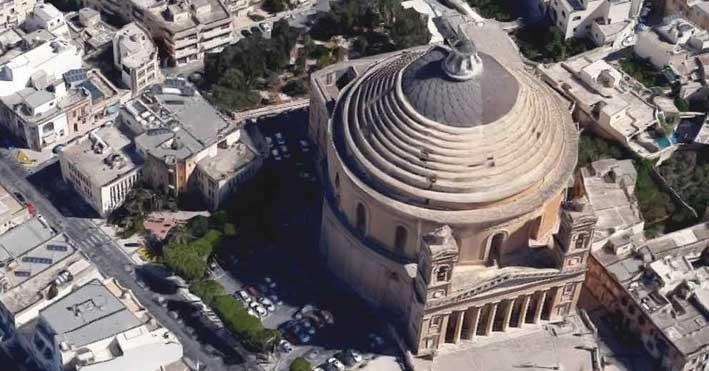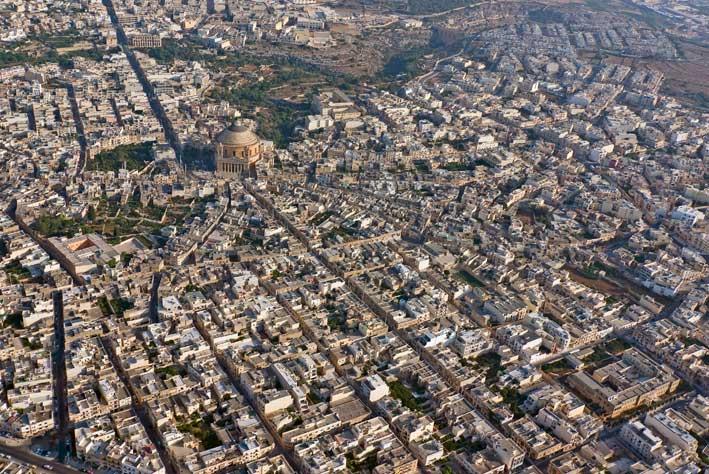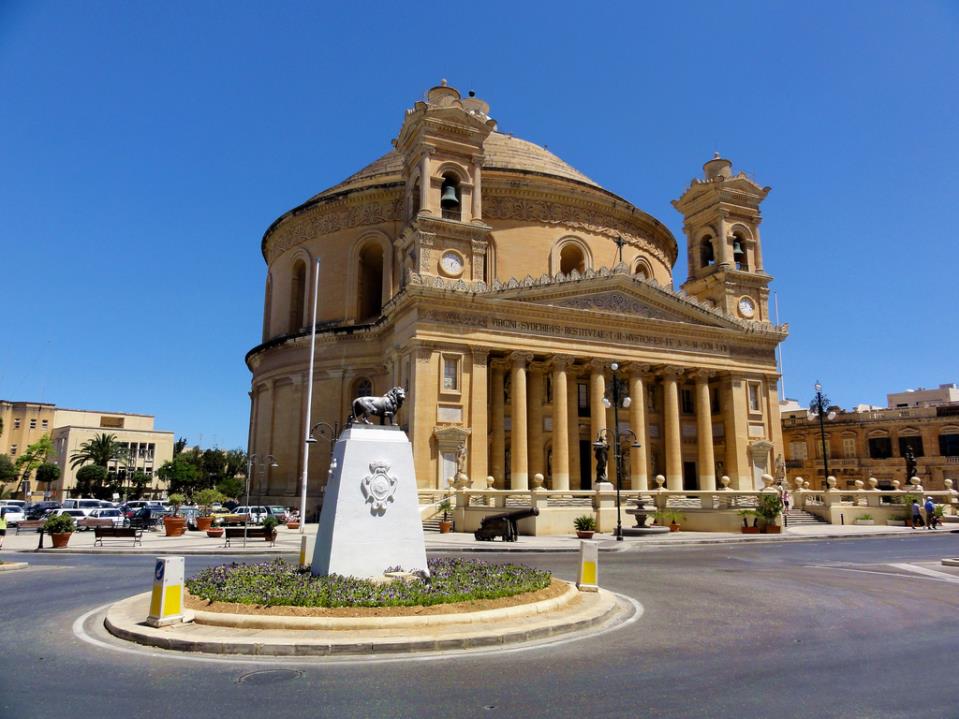Projects Malta will be launching a call for tender for the embellishment of the area surrounding Mosta Dome, and the building of an underground car park that is to have no less than 350 spaces.
Currently, the small car park surrounding the dome includes just 58 spaces. Assessments carried out by Projects Malta however found that there are upwards of 20,000 residents in Mosta, with over 2,000 business entities and a further 7,000 employees.
A spokesperson for the entity said that in an experiment, it took 54 minutes to find a parking spot in the heart of Mosta. In addition to this, a study carried out by the Malta Tourism Authority found that the area is one of the top six most visited sites by tourists. In 2015, Mosta attracted some 700,000 tourists, representing 39 per cent of all tourism in Malta.
Attention was also drawn towards the Mosta Health Centre, which sees rougly 300,000 patients yearly, and employs some 100 health care workers, according to 2015 figures.
Such volume of people and activity made Mosta a prime candidate for the proposed project, the Projects Malta spokesperson said.

In a press briefing informing the media of the specifications for the tender, the spokesperson highlighted three main aims of the project: creation of open space, creation of a pedestrianised zone and a solution to the parking problem.
In addition to this, better access to the health centre, helping potential customers, easier access to the Mosta Dome and a solution for tourist coaches crowding the centre were all highlighted as benefits from such a project.
The criteria for winning the tender are that there are to be no less than 350 new parking spaces built, experience, design and functionality, the proposal must include a methodology statement including excavation methodology and finally the concession fee on offer.
Director of Projects, Emren John Vella explained that each application will have to have a minimum of the above criteria before being considered, and a weighted point system will be employed to further narrow down the proposals.

The concession, due to the significant initial expense on behalf of whoever wins the tender, is for 60 years. The winning party has a total of 30 months from when the permit is issued before it must open its doors for the first motorists to make use of the car park. The price for the use of the car park has been left open, however it was said that prices must make “social sense”.
“A balance between making the project viable for a consortium/entity to undertake the investment and making the car park cheap enough for people to use is key,” said the spokesperson.
Building an underground parking is also expected to mitigate the traffic problem in Mosta, with less motorists having to slowly drive around the centre in the hopes of spotting a free parking spot.
The areas earmarked for the project are split into four zones. Zone A is where the current car park in front of the church, and this is the area which must be made into a public, open space according to the tender requirements. Zone B also surrounds the church – it refers to the area outside the dome where a small children’s playing area can be found.
Zone B is best suited for underground parking. Mr John Vella explained that it is possible for all 350 parking spaces to be built underground in Zone B, as it has the width to fit all those parking spaces.

Zones C and D are smaller and located a short distance away in residential areas. It could be that a proposal is chosen that only effects Zones A and B, leaving C and D untouched.
The building of a bocci club and playing field were mentioned as possible ideas for the ground floor of Zone B, where the underground car park is to be excavated beneath.
Architect Paul Borg from DeMicoli & Associates, who carried out viability and methodology studies said that excavation must happen at a minimum of 6 metres away from the church. He also said that the roof of the underground parking must, at a minimum, be able to take the weight of a crane.
A geo-technical study took place, and it was found that the globigerina lime-stone is ideal for excavation, as it is not too hard and not too soft. He said that the trees which are to be uprooted in order for the project to take place are not endemic, and that the species allow for them to be uprooted and replanted elsewhere.
It was explained that for Zone B, the side of the church where the small children’s playing area can be found, may go down four floors, and that car lifts are ideal in such a scenario as it would save room from ramps which are typically built.

An important requirement of the project is that the building of the car park must happen in phases, so that current car spaces are not lost and as little inconvenience is caused to the area as possible.
Mr Borg said that special consideration is being put on the excavation method, especially next to heritage areas. A number of case studies were shown of underground car parks built close to world heritage sites, such as the Notre Dame in France.
A local excavation case study of a sensitive site was also mentioned, that of St James in Valletta.
Mr Borg spoke of a vibration monitoring system that will monitor vibrations thrown to nearby buildings from excavation works – a modern system that allows the mitigation and prevention from any accidents that may occur from excavation.
A call for tender applications on the Government Gazette will be published next Tuesday, including a link outlining the criteria for winning the tender.
Applicants have until 14 November to present their proposal. Following this, a press statement will be issued showing the number of proposals.
A technical team will be formed in order to monitor and ensure that the building of such a project is in line with all necessary requirements as laid out by the tender, as well as the ensuring of health and safety requirements.
Projects Malta concluded by saying that a large number of meetings took place with the Mosta local council, environmentalists, business entities, the Archdiocese, residents and all relevant stakeholders. It was pleased to announce that all relevant parties, across the political spectrum, were in full agreement of the project.
The Chamber of Small and Medium Enterprises, in a statement, welcomed the initiative.